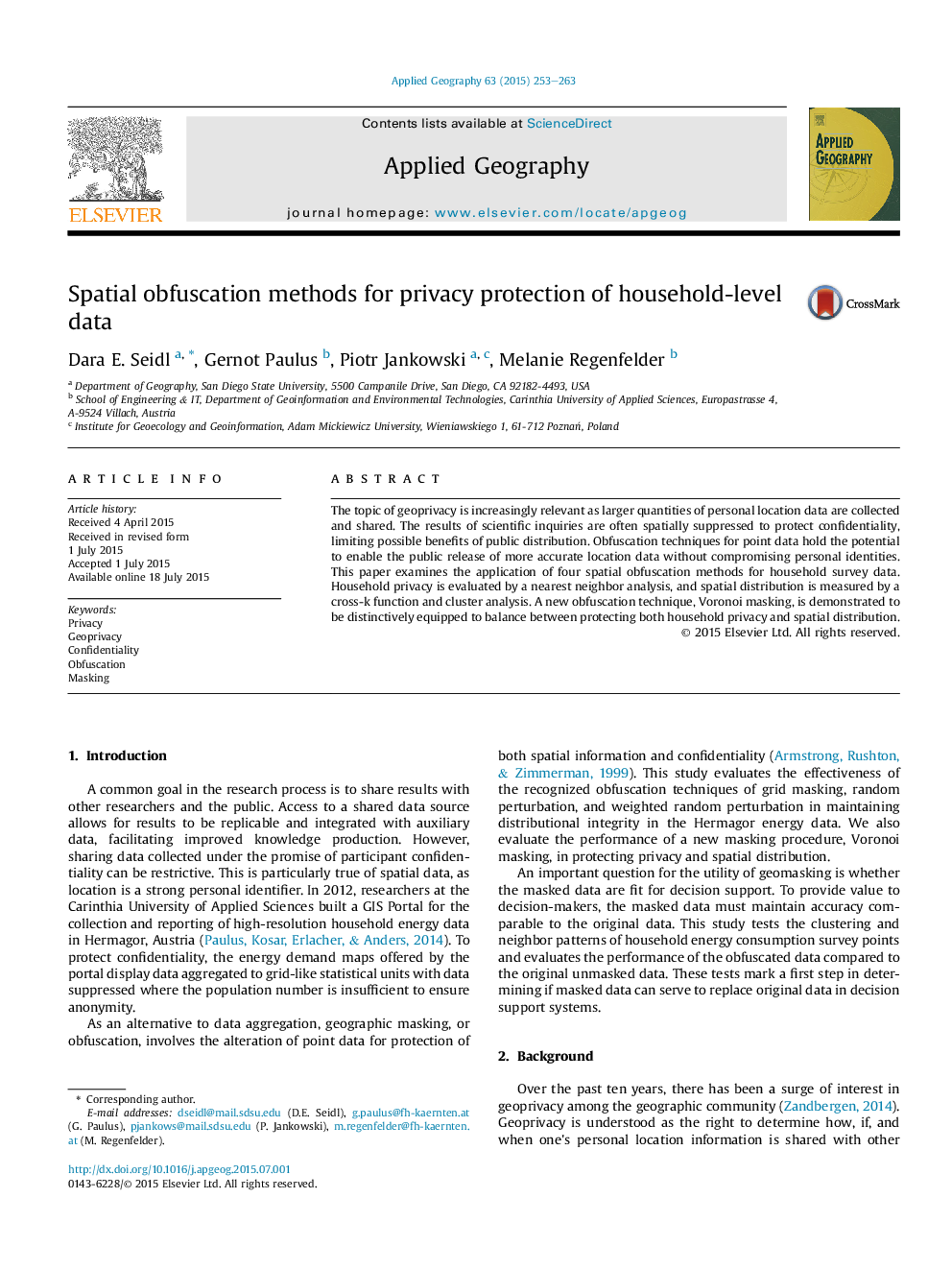| Article ID | Journal | Published Year | Pages | File Type |
|---|---|---|---|---|
| 6538465 | Applied Geography | 2015 | 11 Pages |
Abstract
The topic of geoprivacy is increasingly relevant as larger quantities of personal location data are collected and shared. The results of scientific inquiries are often spatially suppressed to protect confidentiality, limiting possible benefits of public distribution. Obfuscation techniques for point data hold the potential to enable the public release of more accurate location data without compromising personal identities. This paper examines the application of four spatial obfuscation methods for household survey data. Household privacy is evaluated by a nearest neighbor analysis, and spatial distribution is measured by a cross-k function and cluster analysis. A new obfuscation technique, Voronoi masking, is demonstrated to be distinctively equipped to balance between protecting both household privacy and spatial distribution.
Related Topics
Life Sciences
Agricultural and Biological Sciences
Forestry
Authors
Dara E. Seidl, Gernot Paulus, Piotr Jankowski, Melanie Regenfelder,
